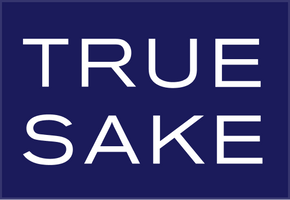Sake Month – The Junmai Life

We selected June to be Junmai Month at True Sake. Why? It’s a pretty cool word in the sake world. Junmai as we know has two meanings. The first is historical and has slightly changed in the past several decades. Junmai – the category of sake - meant sakes that used brewing rice that was historically milled a minimum of 30% with 70% of each grain remaining. Why? It was a way of guaranteeing that a sake was above a threshold, which meant it was premium or better than average everyday sake known as futsu-shu. Basically, it was a measure of quality and brewers strictly adhered to the standard for commercial sake.
The category of Junmai sake changed not long ago at the insistence of many sake brewers for marketing purposes. They wanted to sell less milled or polished rice as Junmai sake. Not to trick consumers or dodge quality restrictions, rather they wanted to create a different style of sake for commercial purposes. It was not an effort to pull the wool over the sake drinkers of Japan, and the powers that be mandated that if a brewer milled less than the standard of 70% remaining then they must print this on the visible label of the sake to be considered Junmai sake. Consumers needed to see that a sake was milled to let’s say 80% and then they could make the choice.

The second and more interesting use of the word Junmai is when it means sake that is made with water and rice only. Hey wait? Huh? Sake is made with rice, water, yeast, and mold… not just rice and water. Okay! I hear you. You are correct. But the shortened definition of Junmai is sake that is made with rice and water only, as well as the other special ingredients that you mentioned. So why say it in the first place? Geesh! Did we wake up on the wrong side of futon? We use this distinction to separate sakes made with just “rice and water” from sakes that use brewer’s alcohol (jozo) in the production process.
We can pick another month to extol the virtues and wonders of Honjozo, Ginjo, and Daiginjo sakes. These are the categories of milling rates of sakes that are made with small amounts of highly concentrated alcohol to make sakes lighter, more nuanced, aromatic, and clean. There is a misconception that sakes made with brewer’s alcohol are to fortify the brews. This is not the case at all. Sakes that use extra alcohol in the brewing process are not like fortified wines. Added alcohol is used to extract the heaviness of just water and rice sakes and adds other dimensions that cannot be achieved by traditional Junmai sakes.
But this month is Junmai month, so let’s talk about the culture around Junmai sake. There are a group of sake brewers and breweries who only make Junmai sake. They see adding alcohol as not pure. It’s not pure rice and water sake. In fact, they look upon added alcohol sakes with disdain and often refer to them as not sake. These folks are purists. I get it. I also get their passion. They go the extra mile in production and technique to try to achieve some of the benefits of added alcohol sake without actually using the satin-juice! Actually I don’t think that they refer to jozo alcohol as satin-juice, in fact I know that they don’t. I was going for effect! Did it work?

I admire the Junmai purists. It feels old school and sort of like a special badge of honor in a special club. And yes, they do have a club! There is an association that is made up of breweries that do not use alcohol in any of their sakes. And they have a sticker to prove it! What’s sort of sad is that I haven’t been noticing that sticker too much any more. For example, Kamoizumi has a Junmai Ginjo sake called “Shusen” or “Three Dots,” which used to have the sticker. Not any more! Same too with Taminohikari and other breweries that export to the states. For me, the sticker represented a passion. I admire that. That said, I do not find any problem with sakes that are made with added alcohol. So I am not a purist in their eyes. Hey! What can I say?! I like sake.
Junmai sake is more than a philosophy. It is also a powerful tool in the sake brewing world, because the result are sakes that have character and depth. Junmai sakes speak to food pairings as well. They have more “solid” characteristics and work well with complexity! One of my favorite importers swears that Junmai sakes were “invented” to pair with green olives! I myself always love challenging wine and was pleasantly surprised when I discovered that the Wakatake Junmai Genshu works wonders with artichokes! Say wha? You bet!
Junmai is the word for the month of June! Come into the store and see our white board for some very clever and crazy Junmai sake pairings with foods that you would never think to pair with sake. Also, check out KJ’s Newsletter Archives for some past articles on Junmai sake and some great pairings. Then proceed to this month’s Top 10 List to read about ten amazing Junmai sakes that you should try at least once in your sake careers! Finally, check out my Beau-Zone Layer to learn about one of my favorite Junmais. And Happy June-Mai!
